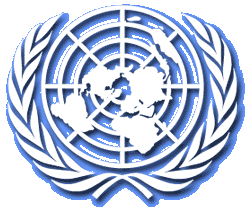News, May 2008
Archives
Mission & Name
Conflict Terminology
Editorials
Gaza Holocaust
Gulf War
Isdood
Islam
News
News Photos
Opinion Editorials
US Foreign Policy (Dr. El-Najjar's Articles)
www.aljazeerah.info
|
Editorial Note: The following news reports are summaries from original sources. They may also include corrections of Arabic names and political terminology. Comments are in parentheses. |
Al-Haq Center for Human Rights Documents Israeli Use of Illegal Force Against Palestinian Civilians in Gaza Strip
Human rights group documents Israeli use of illegal force against civilians in Gaza
Tuesday May 20, 2008 08:10 by Saed Bannoura - IMEMC News
The Al-Haq Center for Human Rights, based in Gaza, has issued a report documenting numerous violations of international law by Israeli forces during a May 14th invasion of the Gaza Strip.
According to the report, the incursion on 14 May 2008 into ‘Izbet ‘Abed Rabbo, in the occupied Gaza Strip provides clear examples of the impact on civilians of Israel’s consistent willful misinterpretation of its obligations under international humanitarian law.
The following is the Al-Haq Center's account of the events that took place on May 14th:
On Wednesday, 14 May 2008, at approximately 8:00 am, 15 Israeli tanks entered the village of ‘Izbet ‘Abed Rabba, west of Beit Hanoun and east of Jabaliya refugee camp in the Gaza Strip, with aerial cover provided by the Israeli Air Force. Upon entry to the village, Israeli ground forces engaged in random gun fire despite not being fired upon. At approximately 9:15 am, 17-year old Hamdi Salemah Khader was riding his bicycle on Al-Karama Road near the local cement factory when he was shot twice (once in the shoulder and once in the upper right quadrant of the chest) by machine gun fire emanating from the tanks, killing him instantly. The distance between Hamdi and the tanks was approximately 500 metres at the time they fired upon him. Further, the topography of the land in this part of the Gaza Strip is flat and unobstructed by buildings. As such the visibility for the tank commanders, when coupled with surveillance provided by aerial cover, must be assumed to have been definitive, providing a clear image of Hamdi on his bicycle, unarmed and presenting no threat to Israeli forces.
By 9:50 am the Israeli occupying forces had begun to encounter Palestinian armed resistance to the incursion in the form of gunfire. Between 10:15 am and 11:10 am when the Israeli forces withdrew, four tank shells were fired towards Jabaliya refugee camp in quick succession from 1 – 1˝ kilometres outside of the camp. Two tank shells were fired at a combatant in a residential neighbourhood east of the camp, killing him as well as an unarmed 19-year old civilian bystander, Ibrahim Hassan Salah, who was walking to school. Another shell fell inside the densely populated camp next to the house of Baker Muhammed Al-Jamal, the shrapnel from the blast injuring 69-year old Zeina Muhammad Al-Jamal and her daughter, Siham. The last shell penetrated the house of Ghassan Mahmoud Abu-Habal inside the camp without detonating, leaving behind a dangerous unexploded ordinance and damage to the house at the shell’s entry point.
According to public statements by Israeli officials, the incursion was a response to the firing by Palestinian armed groups of indiscriminate missiles towards Israel. Al-Haq emphasises that the use by Palestinian armed groups of indiscriminate, and therefore unlawful, weapons against Israel civilian areas provides no justification in law for Israel to employ equally unlawful tactics. Such unlawful tactics include the violation of the customary international humanitarian law prohibitions on collective punishment and reprisals against protected persons; indiscriminate attacks failing to distinguish between civilians and military targets, and between civilian objects and military objects; disproportionate attacks; and attacks launched without taking feasible precautions in the choice of means and methods of warfare with a view to avoiding injury to civilians and damage to civilian property.
The wilful killing of 17-year old Hamdi is a war crime which may amount to a grave breach of Article 147 of the Fourth Geneva Convention. It is impossible to imagine that tank crews stationed at a distance of 500 metres from the child, with a clear line of sight and the benefit of aerial surveillance, could not distinguish between an armed person and an unarmed person. Given that there was no exchange of fire between Palestinian armed groups before the child was shot, the “fog of war” cannot provide a defence. Moreover, the child was nowhere near a legitimate military target and as such cannot be considered as lawful “collateral damage.” Those who planned, ordered or executed this attack are individually criminally liable under the grave breaches regime of the Fourth Geneva Convention and all High Contracting Parties of the Convention are legally bound to search for and prosecute these persons. This obligation on High Contracting Parties is of heightened importance in light of the fact that Israeli authorities have only opened some 270 investigations resulting in a mere 30 indictments with very lenient sentences in relation to over 2,000 Palestinian civilian deaths since September 2000.
The attack that killed 19-year old Ibrahim Hassan Salah and the attack inside Jabaliya refugee camp which injured 69-year old Zeina Mohammad Al-Jamal and her daughter Siham are representative of Israel’s practice of neutralising the enemy using means and methods of warfare in urban combat which are incapable of avoiding civilian casualties. Ibrahim was killed and Zeina and her daughter were injured because they were in the wrong place at the wrong time when Israeli tank crews stationed outside the Jabaliya camp employed heavy weaponry against armed Palestinians in the vicinity. The use of such weapons nullifies any expressed commitment by Israel to respect the principle of distinction.
The consistent use of heavy weaponry in densely populated urban areas of the Gaza Strip accounts for a disturbing number of the deaths and injuries among Palestinian civilians in the Gaza Strip so far this year, including the 28 April killing of a mother and her four children in Beit Hanoun.[1] Implicit in Israel’s policy choice to use the above described means and methods of warfare is the desire to minimise its own combat casualties. However, a willingness to accept the risk of combat casualties is an inherent element of a good faith commitment by Israel to respect the customary international humanitarian law principle of proportionality.
Al-Haq calls upon:
* The Israeli Military Prosecutor for Operational Issues to order a full independent military police investigation into the killing of Hamdi Salemah Khader.
* The High Contracting Parties to the Fourth Geneva Convention to fulfill their obligations under Article 146 to search for and prosecute those responsible for the wilful killing of Hamdi Salemah Khader in the likely event that Israeli authorities fail to investigate.
* The Legal Advisor to the Israeli military to review the legality of the means and methods of warfare used by Israel in urban combat in the Gaza Strip.
Fair Use Notice
This site contains copyrighted material the use of which has not always been specifically authorized by the copyright owner. We are making such material available in our efforts to advance understanding of environmental, political, human rights, economic, democracy, scientific, and social justice issues, etc. We believe this constitutes a 'fair use' of any such copyrighted material as provided for in section 107 of the US Copyright Law. In accordance with Title 17 U.S.C. Section 107, the material on this site is distributed without profit to those who have expressed a prior interest in receiving the included information for research and educational purposes. For more information go to: http://www.law.cornell.edu/uscode/17/107.shtml. If you wish to use copyrighted material from this site for purposes of your own that go beyond 'fair use', you must obtain permission from the copyright owner.
|
|
|
|
||
|
||||||


